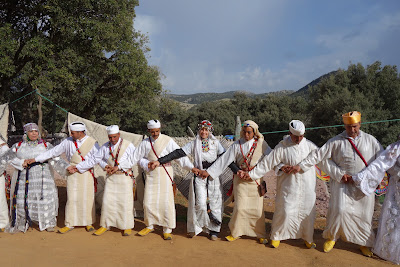Disclaimer: What follows is my interpretation of conversations with dozens of Moroccans, many of them between 16-20 years-old, in two places: Taza and Rabat. I’m sure there are nuances that were missed in translation and different interpretations of all of these ideas.
This is my first trip to a predominantly Muslim country and I had been told that I would find a lot of diversity in religious expression in Morocco. I haven’t been disappointed! What has surprised me, however, is Moroccans’ openness to conversations and questions about Islam, especially among women and girls, whose religious conviction (or lack thereof) is most visible.
Pronouns!
One of the important things to know is that Moroccans often use the pronoun “we” when talking about religion and Moroccan culture, even as differences are acknowledged. “We are Muslim and so…” “As Muslims, we…” “In Morocco we…” While there is no denying the presence of religious minorities in Morocco, there is an assumption that if someone is Moroccan they are Muslim. As an American who is trained to avoid potentially unwanted or inaccurate inclusion by the use of “we,” I found this especially interesting. And while I see the danger in the use of “we,” particularly for atheists, non-Muslims, and foreigners, I also think that because Moroccans are generally tolerant, it shifts the context of conversations about topics like religion. Moroccan identity - “we” - tolerates a lot of diversity. For example, a 17 year-old student who still isn’t “convinced enough” of her religion to wear the veil is still part of the “we”. People in the countryside who have a different history and culture are part of the Moroccan “we.” I know there are exceptions - divorced women and people with dark skin are examples that come to mind - but I think there is evidence to support the fact that ideas about and discrimination against these groups are changing among young people.
My host teacher's daughter (on far left), wife (in pink), sister-in-law (brown shirt), and co-teacher Katherine.
The Veil!
Many of my conversations about religion in Morocco have focused on the veil as it’s the most obvious and common expression of religious conviction. It is possible to see men with beards and skullcaps - including the Fes hat - but it’s not as common a sight as women wearing the veil. Women and teenage girls cover their heads and necks with a wide range of veil styles and colors. What does not differ, however, is what girls say about wearing the veil: it’s my choice AND the Quran states that women should cover their heads. What this means for girls and women is that their choice not to wear the veil isn’t a disagreement about what the Quran says, but is rather an expression of where they are in their religious journey. Most girls - and even women - who don’t wear the veil say things like, “I’m not convinced [of my religion] yet, but maybe later I will be.” My guide here, a middle-aged Moroccan woman, said that she just started wearing the veil this year after a trip to Mecca, in Saudi Arabia. Other girls equate the veil with freedom and say things like, “I’m still enjoying the way it feels to have wind in my hair.” And some girls, women, and even boys/men feel like wearing the veil gives a woman more respect and even prevents harassment, though there is disagreement about this.










